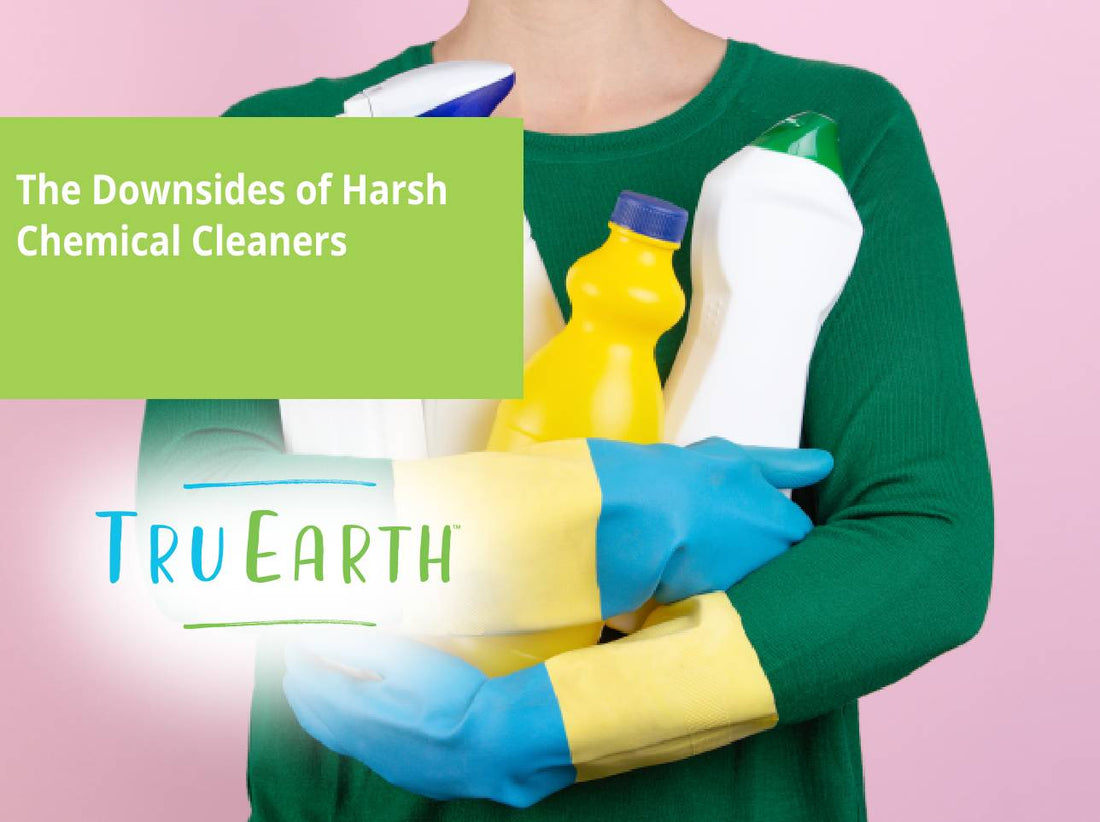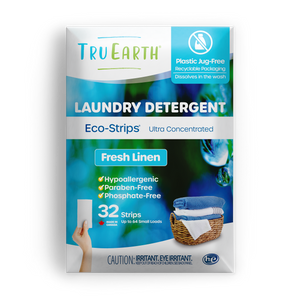In the pursuit of a clean and healthy living environment, many of us turn to cleaning products that promise to obliterate dirt and grime with a single swipe. However, while these harsh chemical cleaners might deliver immediate results, they often come at a hidden cost to our health and the environment.
In this comprehensive guide, we will take a close look into the downsides of using harsh chemical cleaners, shedding light on the potential risks they pose and offering sustainable alternatives that promote both cleanliness and well-being.

The Allure of Harsh Chemical Cleaners
The shelves of supermarkets and cleaning supply stores are lined with a plethora of cleaning products that boast their efficacy in tackling tough stains, eliminating germs, and leaving surfaces sparkling. The allure of these products lies in their promises of convenience and instant gratification, often leading consumers to disregard the potential negative consequences they may bring.
Understanding the Risks
In our pursuit of spotless living spaces, it's easy to overlook the potential hazards lurking in the very products designed to keep our surroundings clean. Harsh chemical cleaners, while promising immediate results, often come with a hidden price tag – risks to our health and the environment.
In this section, we delve into the multifaceted risks posed by these conventional cleaning agents, shedding light on the interconnected health, environmental, and even societal concerns that warrant a reevaluation of our cleaning choices. By understanding these risks, we empower ourselves to make informed decisions that prioritize both our well-being and the planet's sustainability.
Health Hazards
Many conventional cleaning products contain toxic chemicals, such as ammonia, chlorine, and phthalates, which can cause respiratory irritation, skin allergies, and even more serious health issues with prolonged exposure. Inhalation of fumes from these cleaners can exacerbate respiratory conditions and may be particularly harmful to children, elderly individuals, and those with pre-existing health concerns.
Environmental Impact
When we flush harsh chemical cleaners down the drain or discard their containers, these chemicals can find their way into our waterways and soil, polluting aquatic ecosystems and disrupting the delicate balance of nature. The accumulation of these chemicals can have far-reaching consequences on aquatic life and water quality.
Indoor Air Quality
The use of chemical-laden cleaners indoors can lead to poor indoor air quality. Volatile organic compounds (VOCs) present in these products can evaporate into the air, contributing to indoor pollution. Poor indoor air quality has been linked to various health issues, including headaches, eye irritation, and respiratory problems.
Promoting a Healthier Approach
In today's fast-paced world, where convenience often takes precedence, it's important to pause and consider the impact of our choices on both our well-being and the environment. This holds particularly true when it comes to the products we use in our everyday cleaning routines. Let’s take a closer look at the following:
Eco-Friendly Cleaning Solutions
Embracing eco-friendly cleaning alternatives can significantly mitigate the risks associated with harsh chemical cleaners. Ingredients like baking soda, vinegar, lemon juice, and essential oils can be used to create effective cleaning solutions that are safe for both human health and the environment.
Green Certified Products
Look for cleaning products that have earned green certifications from recognized organizations. These certifications ensure that the products have undergone rigorous testing and meet strict environmental and health standards.
DIY Cleaning Recipes
Creating your own cleaning solutions using simple ingredients is not only cost-effective but also allows you to control the substances that come into contact with your living spaces. From all-purpose sprays to toilet bowl cleaners, there are numerous DIY recipes that prioritize your well-being.
Making Informed Choices
In a world flooded with options and decisions, the power of making informed choices cannot be overstated. This principle resonates strongly in the realm of cleaning products and practices. Today, the importance of understanding the ingredients, environmental impact, and potential health effects of cleaning products is paramount. Let’s take a closer look:
Read Labels
Before purchasing a cleaning product, carefully read its label. Look for information on the ingredients used, and be cautious of vague terms like "fragrance" that could potentially hide harmful substances.
Avoid Overuse
Harsh chemical cleaners are often potent, meaning you may not need to use them as frequently as gentler alternatives. Using products sparingly can help minimize your exposure to their potentially harmful effects.
Proper Disposal
If you do use chemical cleaners, ensure that you dispose of their containers responsibly, following local disposal guidelines. Avoid pouring them down the drain, as this can contribute to water pollution.
The Power of Transitioning
Transitioning away from harsh chemical cleaners is a powerful step towards safeguarding your health, the well-being of your loved ones, and the environment. By opting for greener alternatives and adopting mindful cleaning practices, you not only reduce your ecological footprint but also contribute to a healthier and more sustainable lifestyle.

Navigating the Pitfalls of Harsh Chemical Cleaners
While the allure of immediate cleanliness offered by harsh chemical cleaners is undeniable, the risks they pose to our health and the environment cannot be overlooked. With a growing awareness of these downsides, there is an increasing movement towards adopting eco-friendly cleaning solutions that prioritize safety without compromising effectiveness.
By understanding the potential risks, exploring alternatives, and making informed choices, we can transform our cleaning routines into acts of care for ourselves and the planet. The journey towards a cleaner, healthier future starts with every conscious decision we make today.


